35-Day City-Hopping: 1 Day in Kagoshima
Previously, we took a look at how I spent 2 days over new year’s in Okinawa. Until now, nothing had been planned in any way which meant that traveling wasn’t exactly the most efficient, but it was still fun in its own way. Now, we’ll finally be delving into my day-to-day city hopping adventure, starting with the city of Kagoshima.
Want to focus on the takeaways? Check out the Summary and Lessons Learned!
Arriving at Kagoshima Airport
The flight between Naha and Kagoshima Airport took close to 1.5 hours. Unfortunately, there was no railway line connecting the airport to the downtown core like Naha with their monorail. However, there is the airport limousine bus which is the best value option as it costs only 1,400 yen and takes around 40 minutes to arrive at Kagoshima-Chuo station. When buying the ticket, they didn’t accept IC cards but they did accept cash. The staff will also ask which stop you’ll be getting off at and will separate the luggage accordingly. Be careful not to make a mistake here as they will unload your luggage at the stop you specified during boarding.
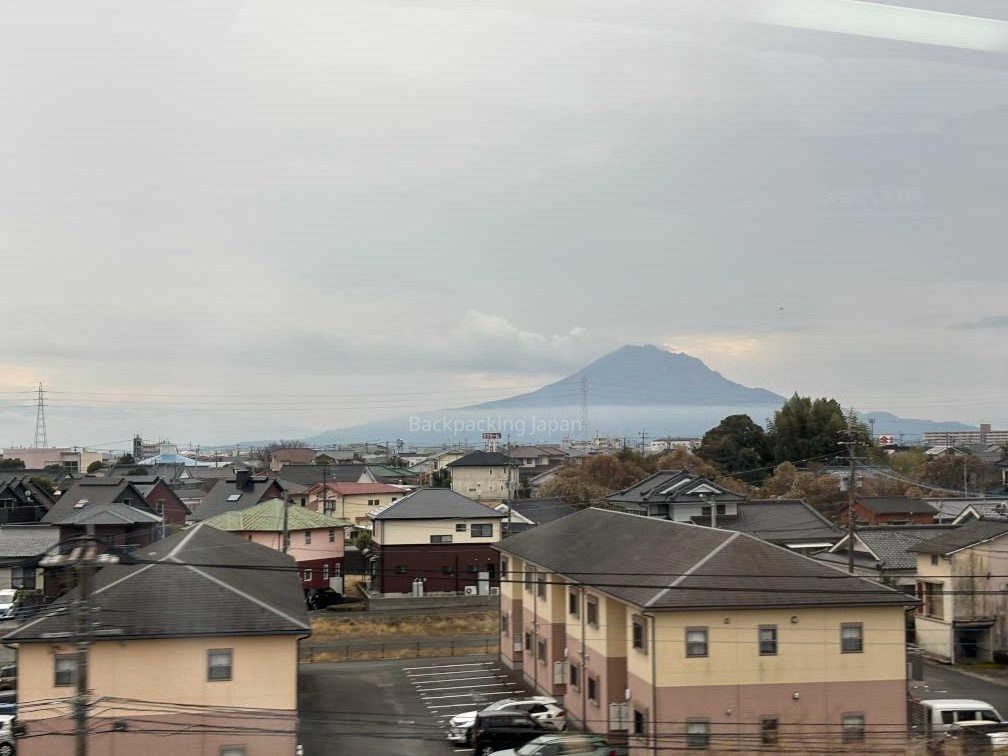
As for the hotel, I stayed in Tenmonkan which is a large commercial district of Kagoshima that can be considered the downtown area. It’s a bit separated from Kagoshima-Chuo station but the location was very convenient and had many shops nearby, so I’d gladly stay in the area again. The airport limousine bus also stops in the area, so there were no transfers necessary between the airport and Tenmonkan.
Tenmonkan
Upon arriving at Tenmonkan, the first thing was to drop off the luggage at the hotel. It’s a really helpful service as you can reduce the amount of weight you need to lug around until check-in. It’s also typically a free service, so why not take advantage of it?
Starving from not having eaten an adequate breakfast, the first objective after dropping off the luggage was to find somewhere to eat brunch. Transportation would be a little annoying however as the common I/C cards aren’t accepted as payment on the private lines in Kagoshima. Fortunately, there’s a 24-hour pass that can be purchased. If you time it well, you can also use it the next day to go to Kagoshima–Chuo when you need to access the JR network.
Since Kagoshima is known for kurobuta (black pork), that settled what to eat. As for where, the plan was to head over to Sakurajima Island after brunch which meant eating near the Kagoshima ferry docks was ideal.
Around that area, there was the Yamakataya Department Store which had a restaurant at the very top floor which served kurobuta tonkatsu set meals. Included in the meal were cabbage, rice and miso soup. If my memory serves correctly, there were free refills on the cabbage and the miso soup.
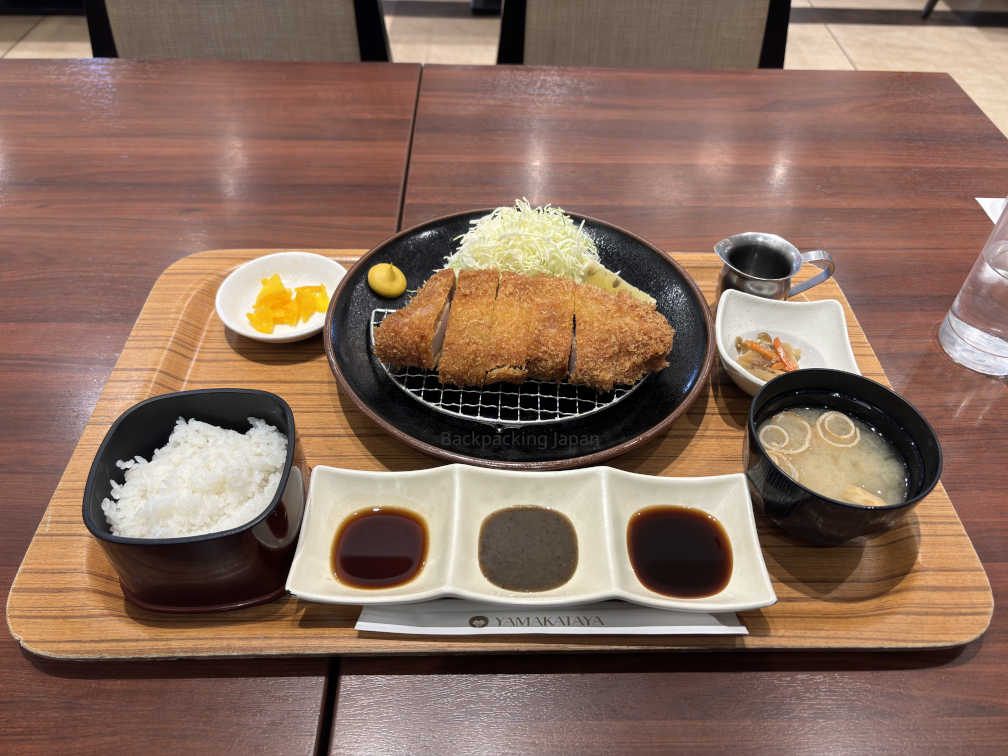
After lunch, it was time to make a visit to Sakurajima Island. In order to get there from Kagoshima, the fastest way is by ferry which is approximately a 15 minute ride. Heading to the ferry dock, there is a park by the waterfront with a view of Sakurajima which makes for a nice pit stop.
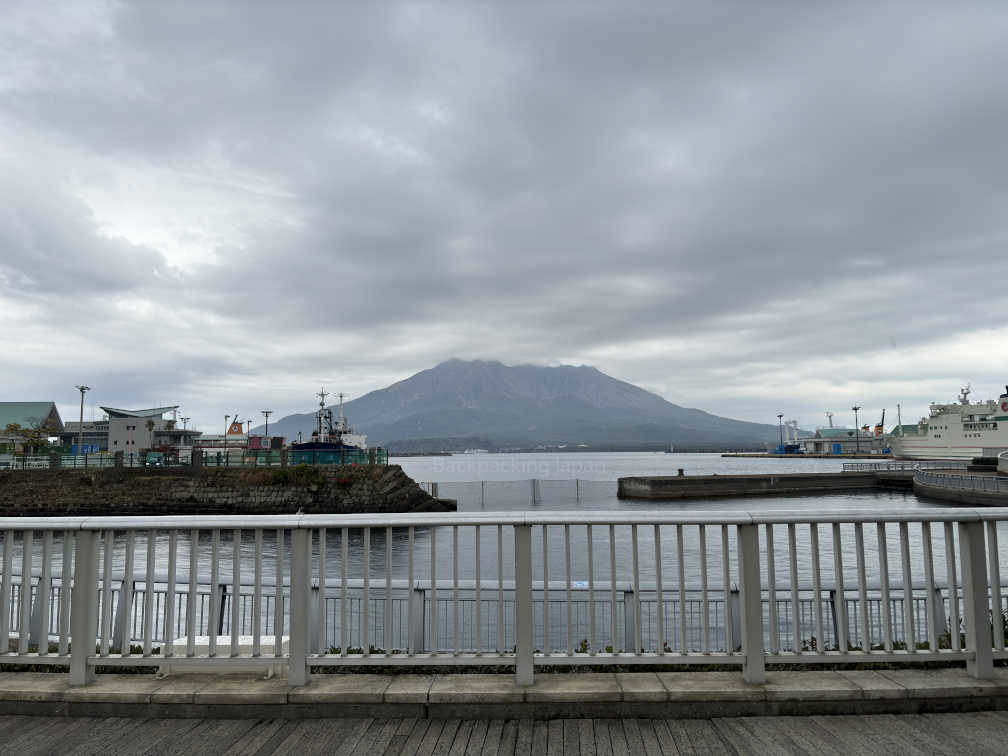
In order to ride the ferry, there is a one-way fee of 200 yen which is charged on the Sakurajima side and can be paid with using IC cards. There’s also an udon shop inside the ferry so you can eat as you wait for the ferry to finish its trip.
Sakurajima Island
Having arrived, the first spot to check out was the hot spring foot bath, Nagisa Park Footbath. However, there was a shrine immediately across the ferry port which had a beautiful entrance. It felt like it would’ve been a shame to skip it, so getting sidetracked became a higher priority.
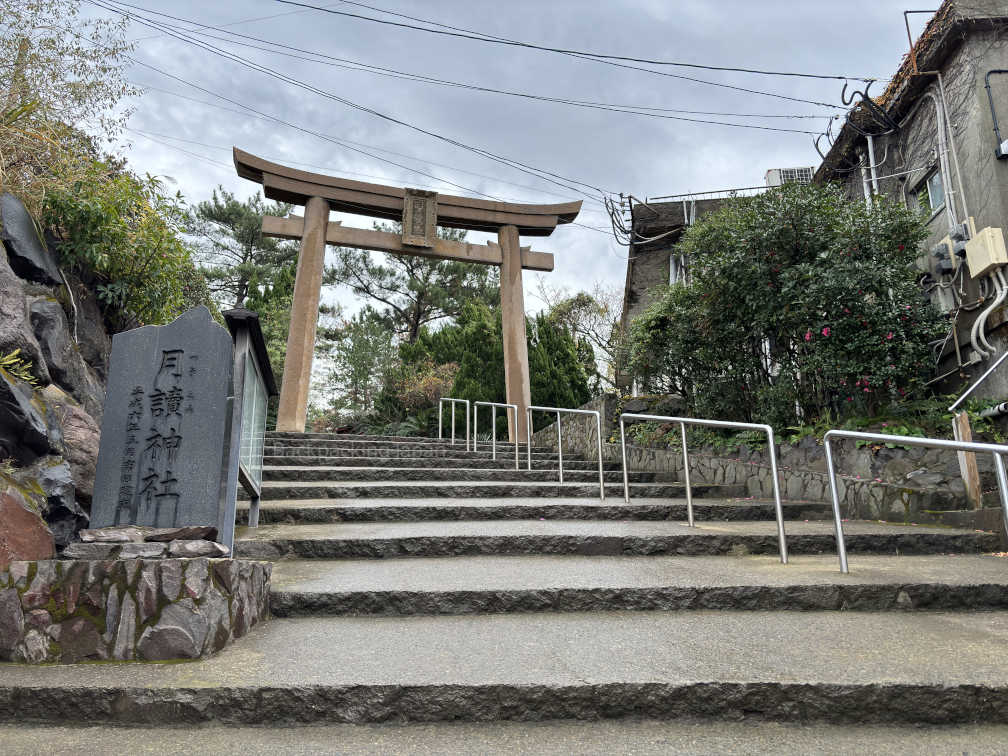
Within the shrine, there was also an observation deck that lets you peer through trees and look back at Kagoshima.
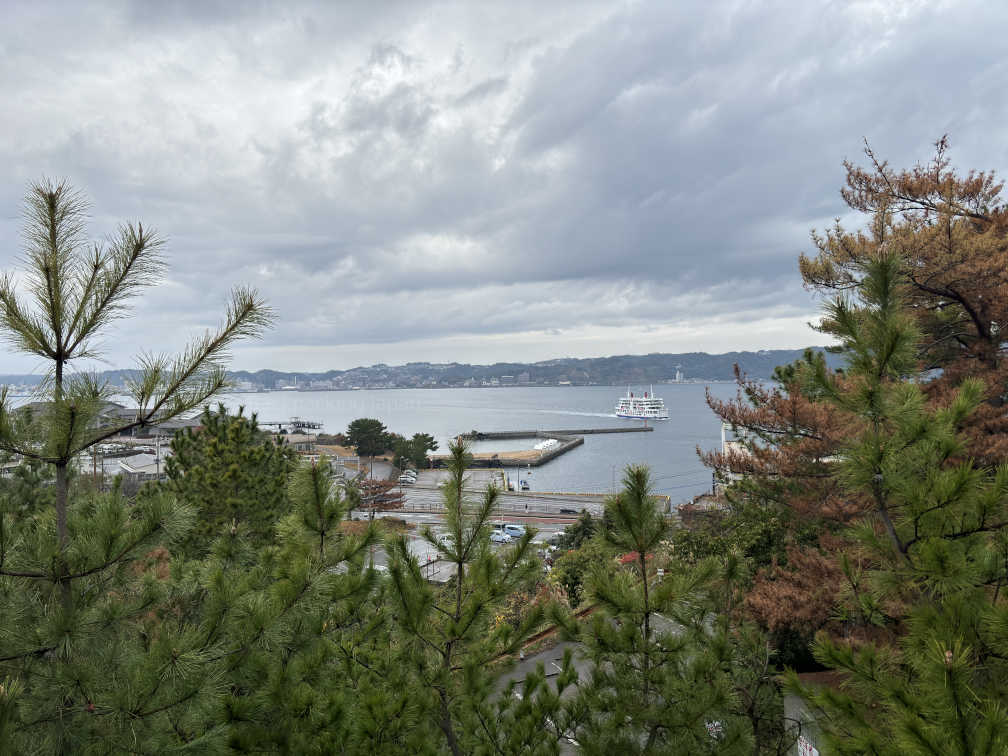
After buying some charms and omikuji fortunes, it was back to heading towards the foot baths. Only to be once again sidetracked by the surprising number of cats on the island.

While these cats don’t have owners, they’re not afraid of humans. A lot of people end up petting them and playing with them a little.

Luckily, the cats were near the foot bath at the time meaning it would take merely a few minutes to arrive there after being done with getting distracted. At the foot baths, they provide wooden seats to rest on as you bathe your feet. Unfortunately there was a sprinkle of rain earlier, so the seats were wet. For times like this, it’s possible to use the seats under the gazebo but it was fully seated when I had arrived. With no better idea, I had to settle for getting my jeans wet. If you do mind getting your pants wet, it’s worth considering carrying some sort of tarp to cover the seats in case it rains.
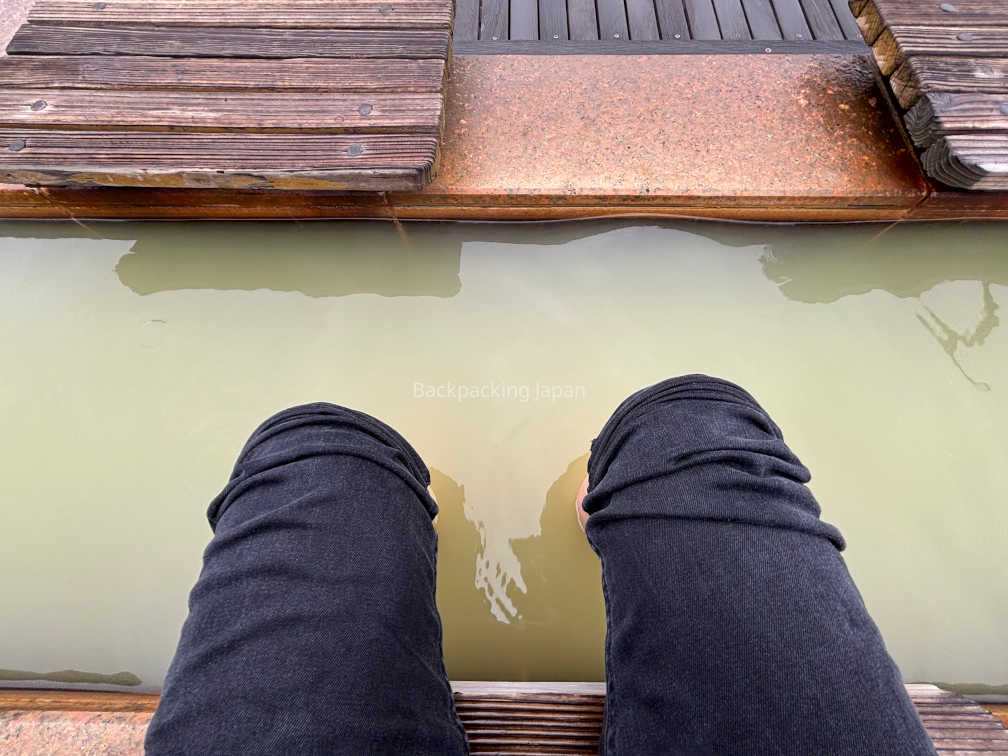
When it was time to leave, there was no way to dry off my legs. The only option was to wait for them to air out. At least there was good scenery to keep occupied with while waiting. To save a bit of time, consider bringing a small towel to wipe the water off when you’re done soaking your feet.

While sitting at the foot bath earlier, I noticed that there was a promenade which ran adjacent to the shore, the Nagisa Lava Trail. It was finally time to take a stroll along it now that my legs had dried off. Near the start of the path, there’s a landmark/attraction which looks sort of like a crater filled with some water.
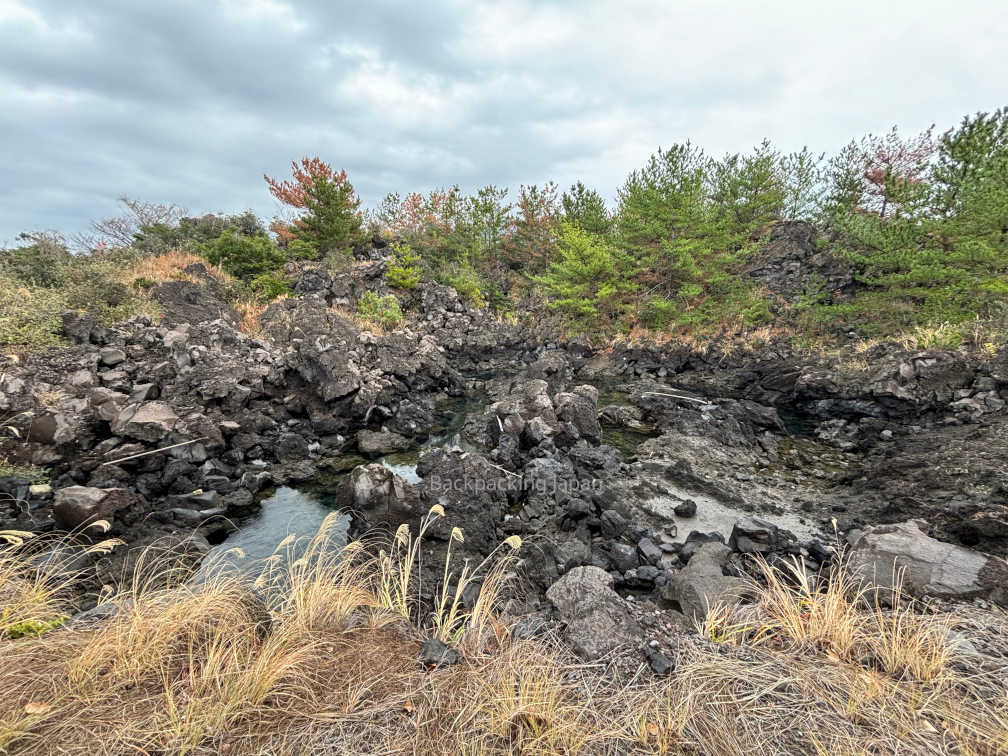
Along the way, there’s more furry friends that show up. Some of which mind their own business…
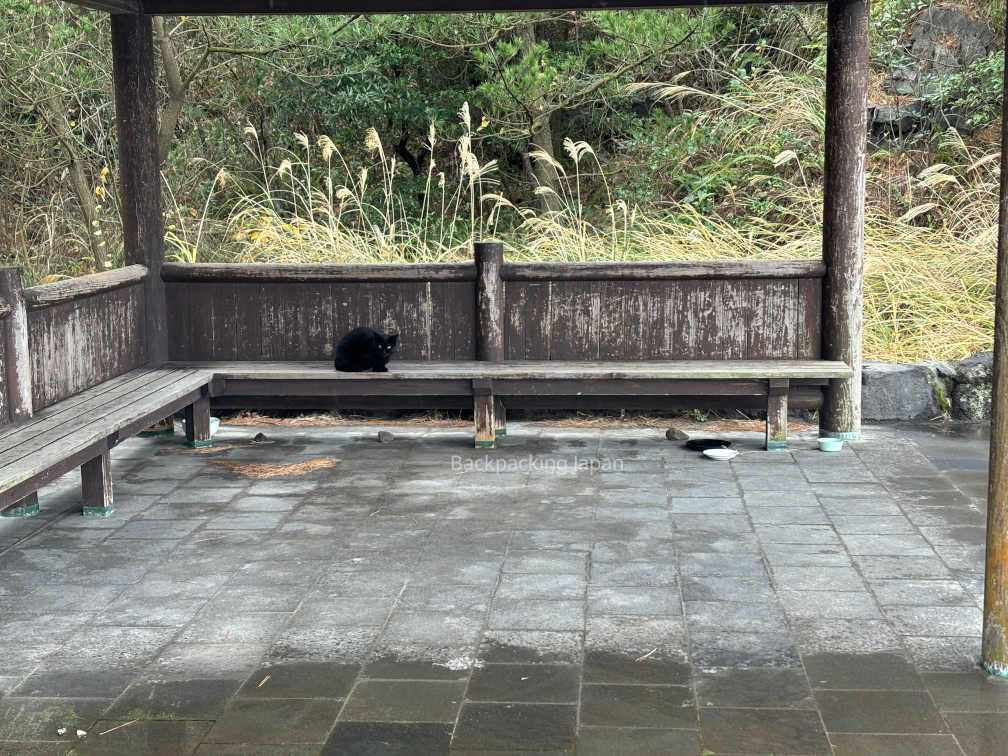
While others are more bold and will actually approach you. They will play around your legs and one even rolled over to show its belly! Unfortunately I didn’t capture it rolled over.
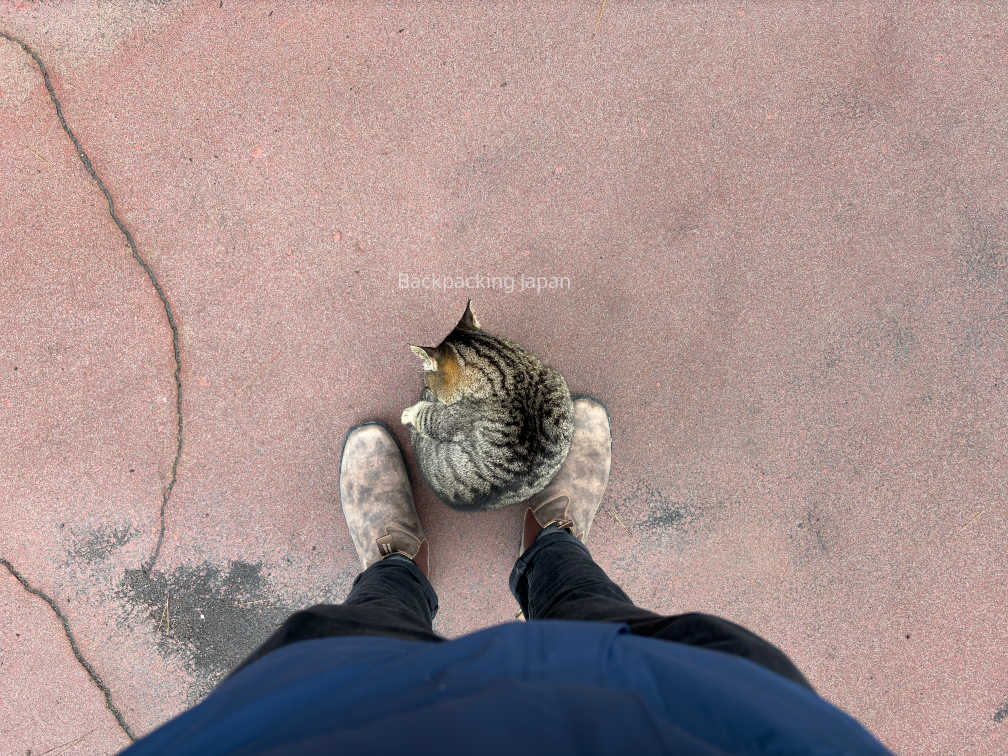
Upon leaving, they may even chase after you for a little while.
As for the scenery, it will cut back and forth between a view of the shore and a view of the woods. So it’ll feel like a promenade at times, and a forest trail at others.
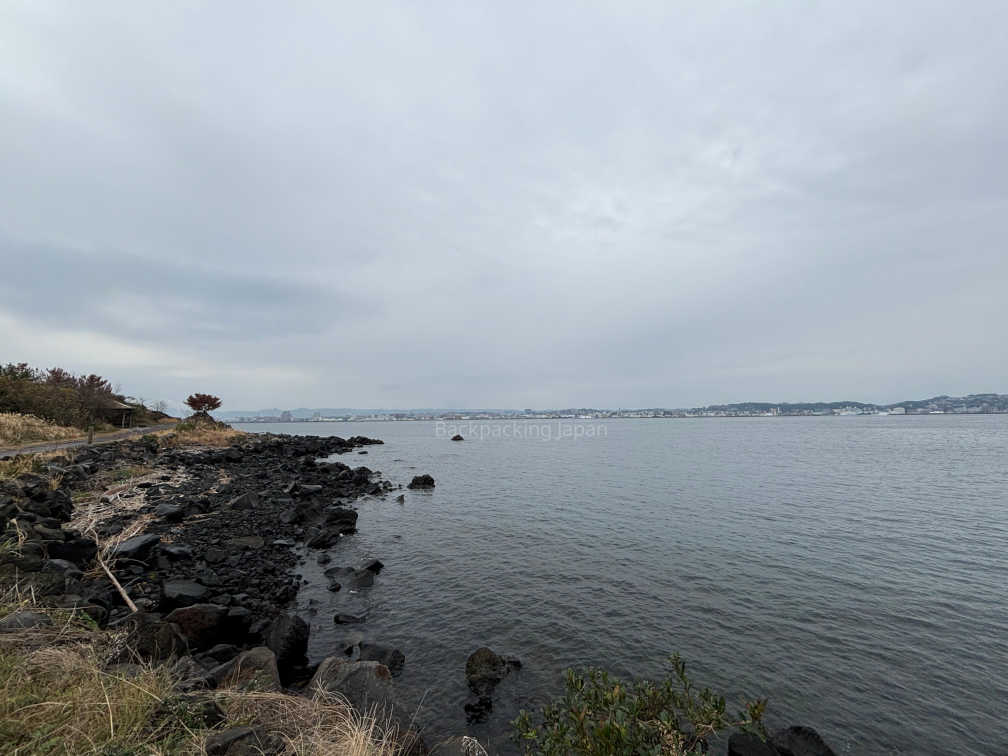
At the end of the trail, there’s an observatory spot, Karasujima Observatory, which allows you to look at Kagoshima over the trees and at Mt. Sakurajima. Unfortunately the clouds started rolling in, so it was hard to get a clear view of Mt. Sakurajima.
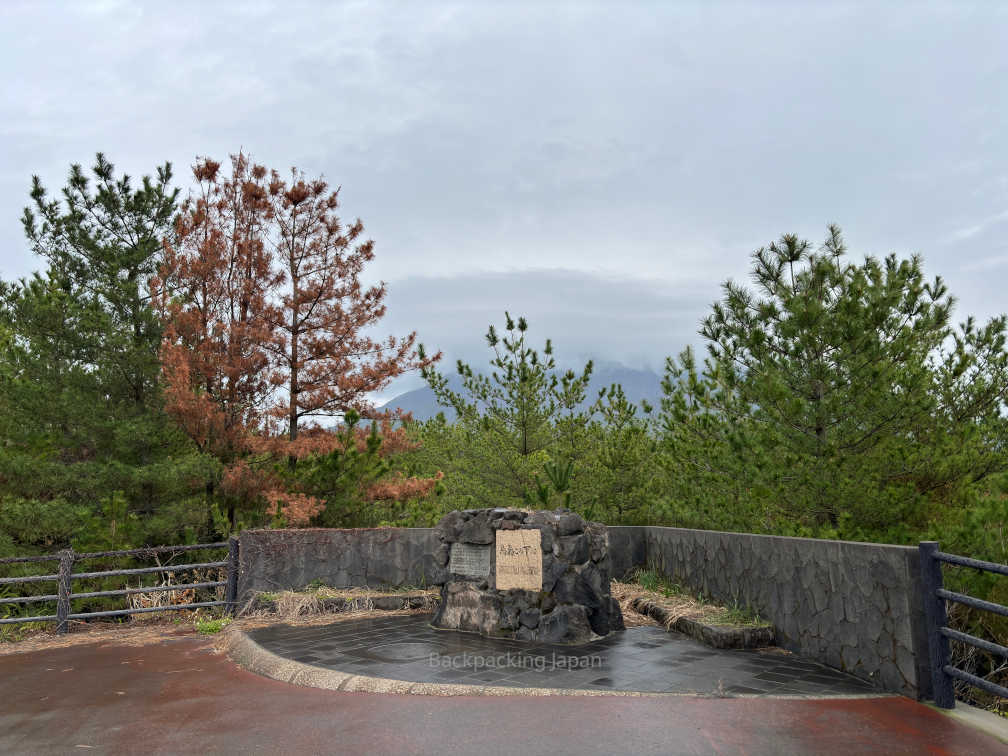
Proceeding any further from the observation point, it becomes less feasible/reasonable to do so unless you have a vehicle of some sort. There still exists a pathway if you’d like to walk, but many of the other observation points are further out and the view mostly becomes roads and trees. I’d only have continued if I had a bicycle at the minimum. Fortunately, the observatory has a bus stop for the Sakurajima Island-View Bus. You can wait there if you’re looking to go to the top-most location of Mt. Sakurajima that tourists are permitted to visit, Yunohira Observation Deck.
I wasn’t quite ready to take the bus as there were still some locations near the foot bath that I wanted to check out. Needless to say, it would’ve been more time efficient to have done that first. Unfortunately the bus is a one-way loop going the other way which meant that the only option was to walk back. But by taking the pedestrian road back, it was possible to witness one of the eruption shelters which is a stark reminder that visiting Sakurajima still has some risks as the volcano is still very active.
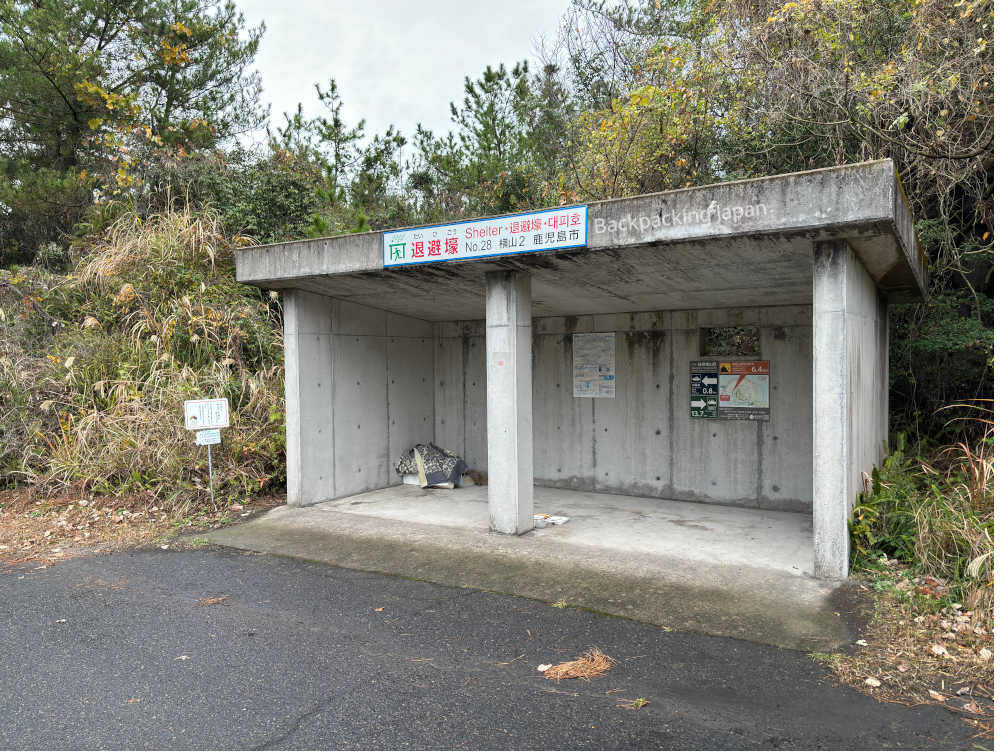
Time was tighter than expected upon returning back, so I limited myself to the visitor center and magma onsen (didn’t actually enter) as brief stops. I also started getting hungry, so I had to make a stop by the closest FamilyMart. Afterwards, it was time to take the bus from the bus stop at the port to go up to Yunohira Observation Deck.
By the time the bus had reached the top, the clouds were still mostly blocking out Mt. Sakurajima. To make matters worse, the higher altitude also meant it was much colder and windier. Not wanting to hang around much longer, I hopped back on the bus to return to the ferry port. Note that the Sakurajima Island Bus does not accept the 24-hour pass as a valid fare, so cash is necessary unless you have a different pass such as the 500 yen Sakurajima Island-View Bus day pass. Paying with cash, the round-trip fare cost 460 yen in total for the 2 rides.
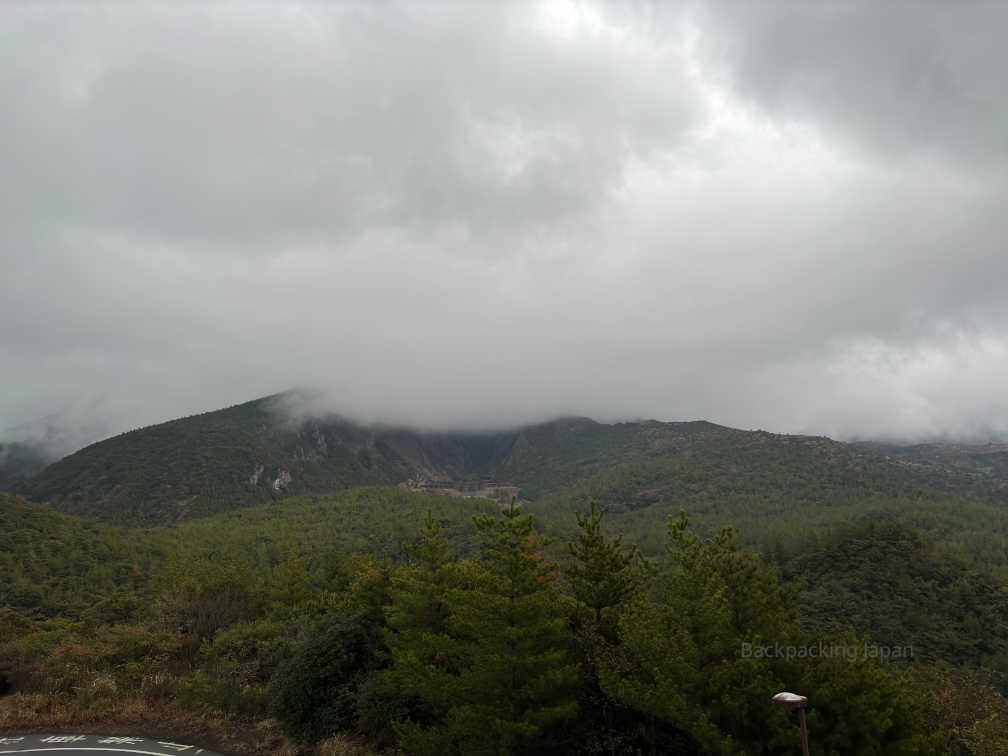
On the way back to Kagoshima, it was time to try the ferry udon. Some of the customers had taken their bowls elsewhere on the boat to enjoy the scenery while eating, which seems like an interesting selling point of the udon.

Back to Kagoshima City
Having arrived back in Kagoshima, I decided to head back to the hotel to take a short break and look up places for dinner. On the way there, there were some great opportunities to capture various moments of the city.
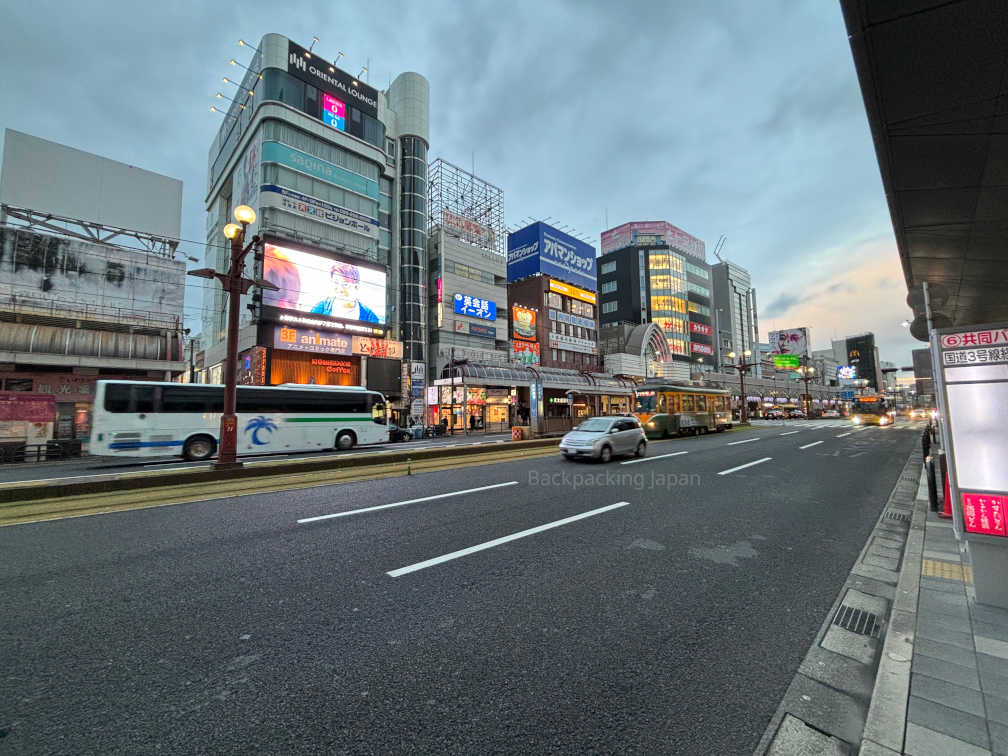
Prior to arriving in Japan, I had already decided that kurobuta shabu-shabu was a must, so finding dinner should’ve been as easy as finding a restaurant. Heading out after deciding on a restaurant, it had yet to reach 6:00 pm; the restaurants shouldn’t have been as busy as rush hour hadn’t particularly started yet. Yet every restaurant seemed to have been fully booked out as I kept getting turned away. Even towards the end of the new year’s holidays, it seems like restaurants are still really busy, warranting a reservation. But given the popularity of kurobuta in Kagoshima, it’s probably worthwhile to make a reservation regardless.
Having spent over 30 minutes trying to find a restaurant with no luck, I called it quits on eating kurobuta shabu-shabu. The sun was well past set and I was tired, but at least the search led to a discovery of an illumination event.

Luckily, ramen was on the backup list and typically doesn’t require reservations. Kagoshima is also known to have its own take on ramen, making this a good opportunity to try something different.

Still feeling peckish after the ramen, it was time to head to the Satsuma Jokiya confectionery store to try out a local sweet. This confectionery was kasutadon, a sort of custard-filled sponge cake.
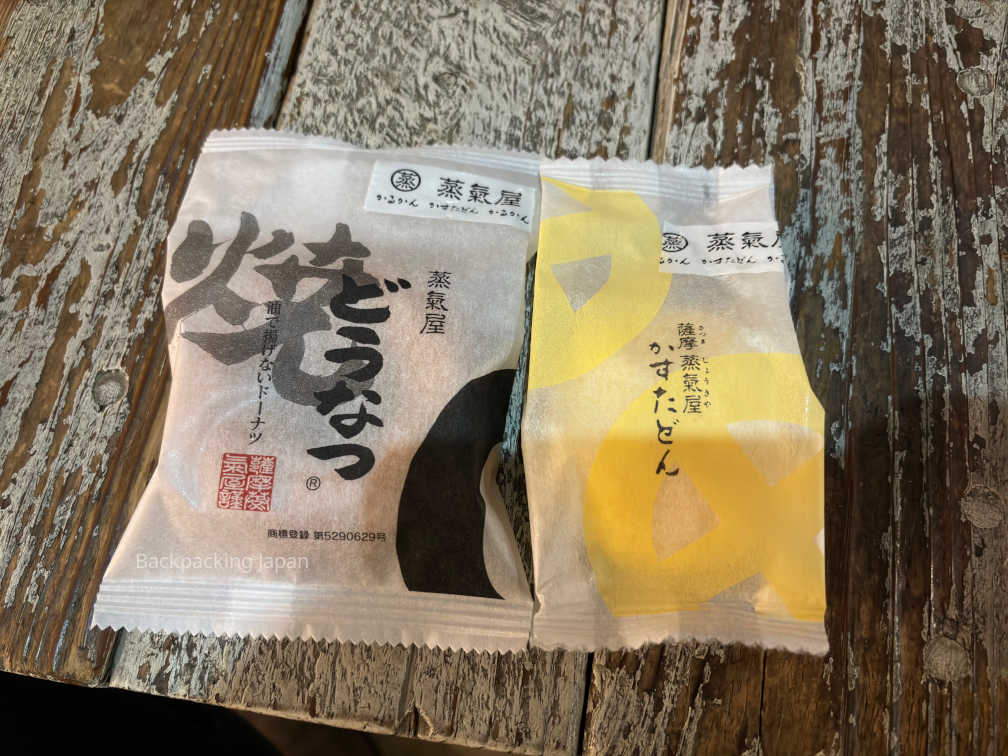
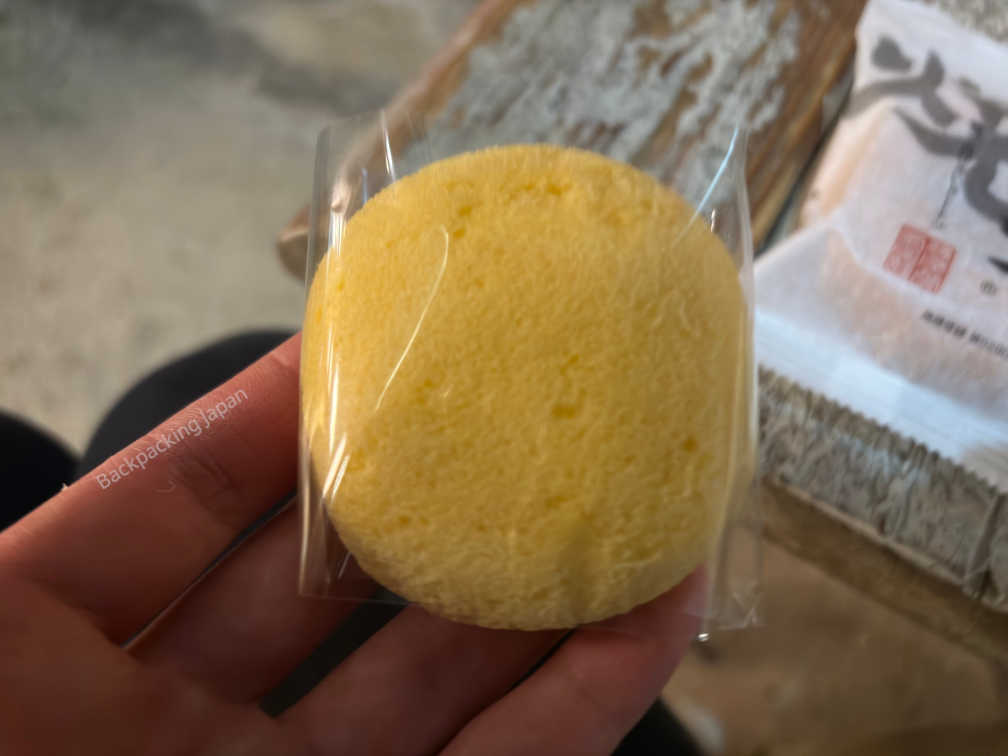
The shop also had donuts!
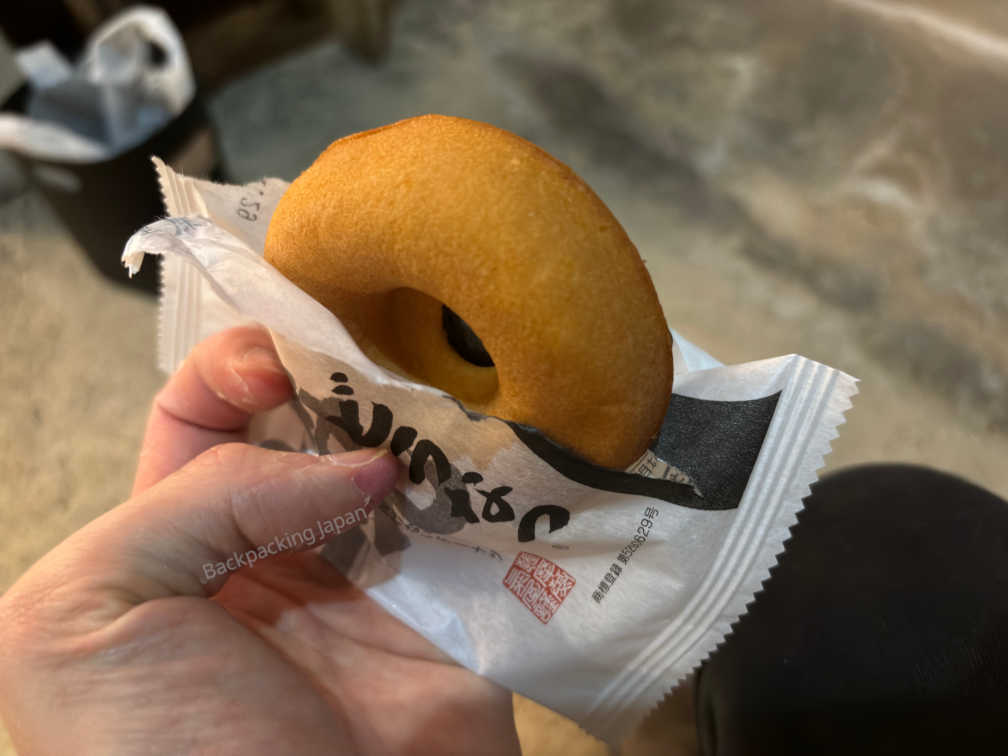
It was already past 7:30 pm by the time I had finished eating. Still quite early, but not a whole lot of time left as I wanted to sleep early to wake up early to leave for Kumamoto. Fortunately, there are still some attractions which are near the Tenmonkan area which are open at night, starting with Terukuni Shrine.
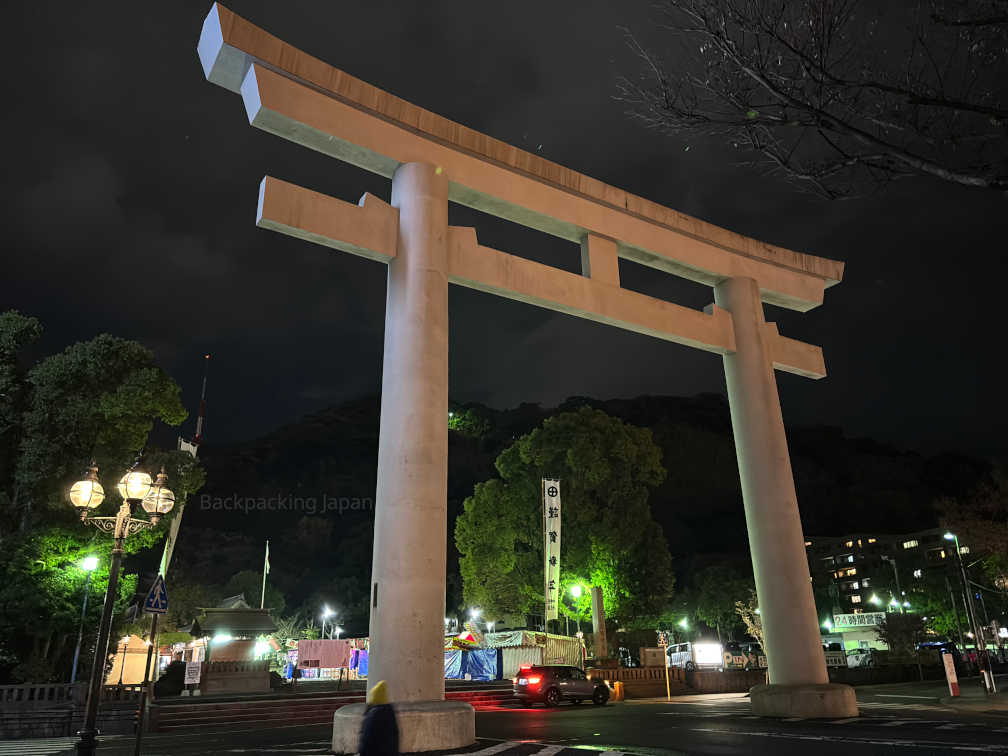
By the front entrance past the large Torii gate, there were a couple stands set up and one of them was still operating, selling sweets and drinks. I took this opportunity to try out a non-alcoholic Amazake (sweet sake).
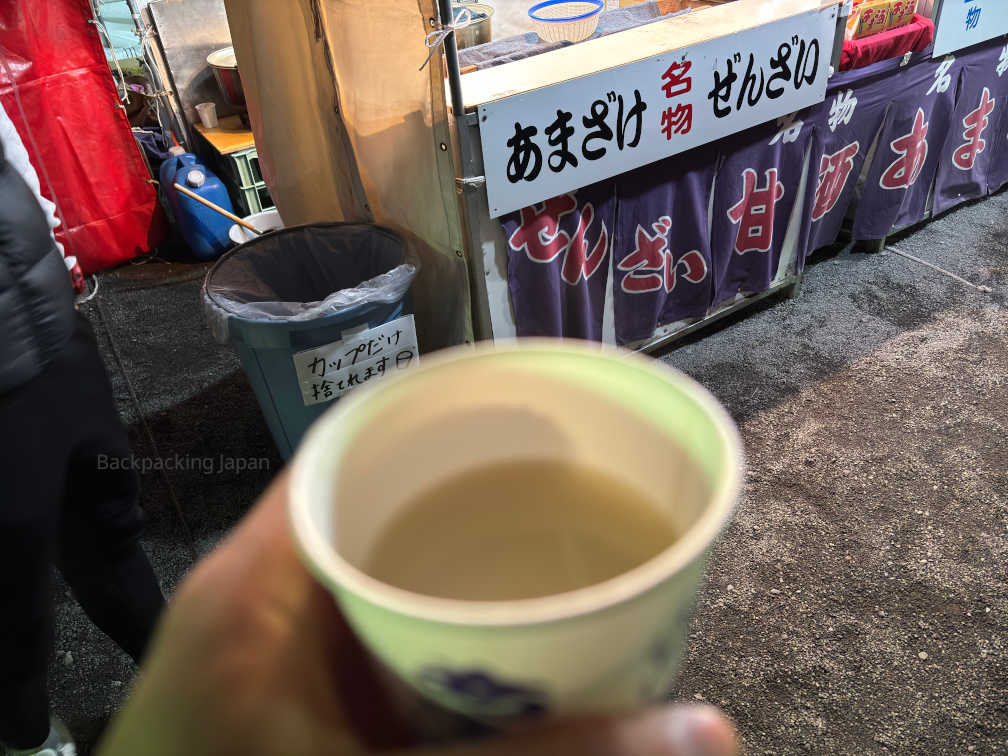
As for the shrine itself, it was still openly accessible for donations/praying. There were a small handful of people visiting for that purpose, but nothing comparable to Naha, making a night visit to this shrine very feasible.
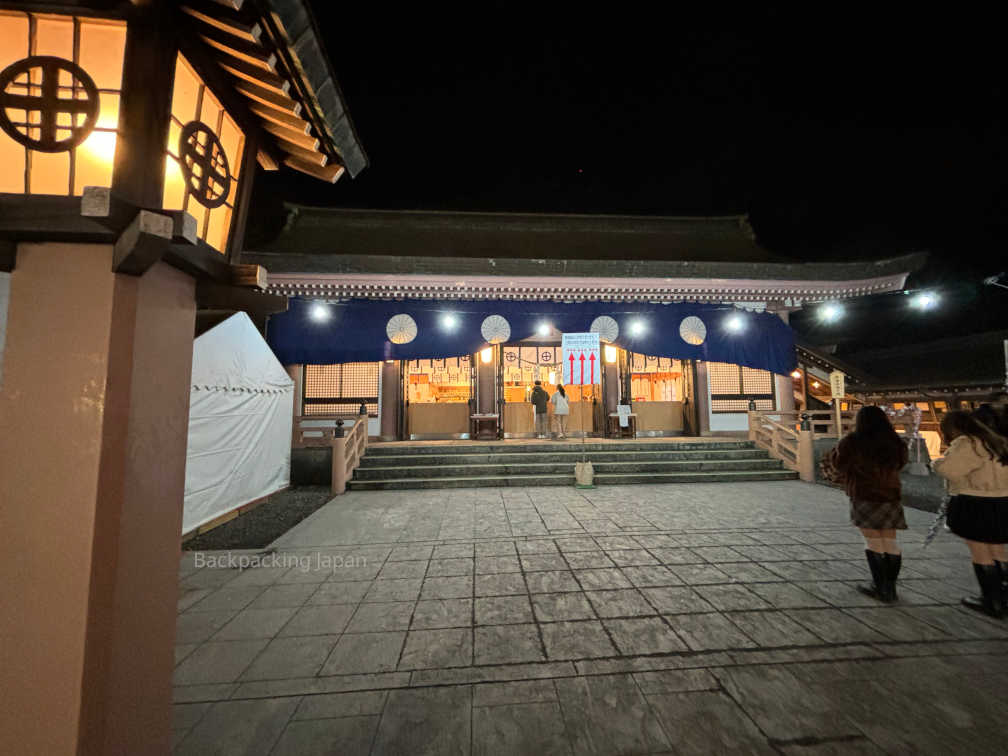
Mount Shiroyama
After making a quick walkaround the shrine, the next spot was Mount Shiroyama. Near the shrine, there’s a road which leads to stairs which climb Mount Shiroyama. With virtually no light to brighten up the path, bringing a flashlight is a necessity. Extra caution is also required on each step as the steps were slanted downwards. I would’ve loved to record the climb but it was too dark for the sensor to capture anything. That, and I also needed the flashlight for a significant portion of the climb both up and down.
The climb itself is fairly short, only taking around 20-30 minutes. To think that it’s possible to get such a view in such a short amount of time!
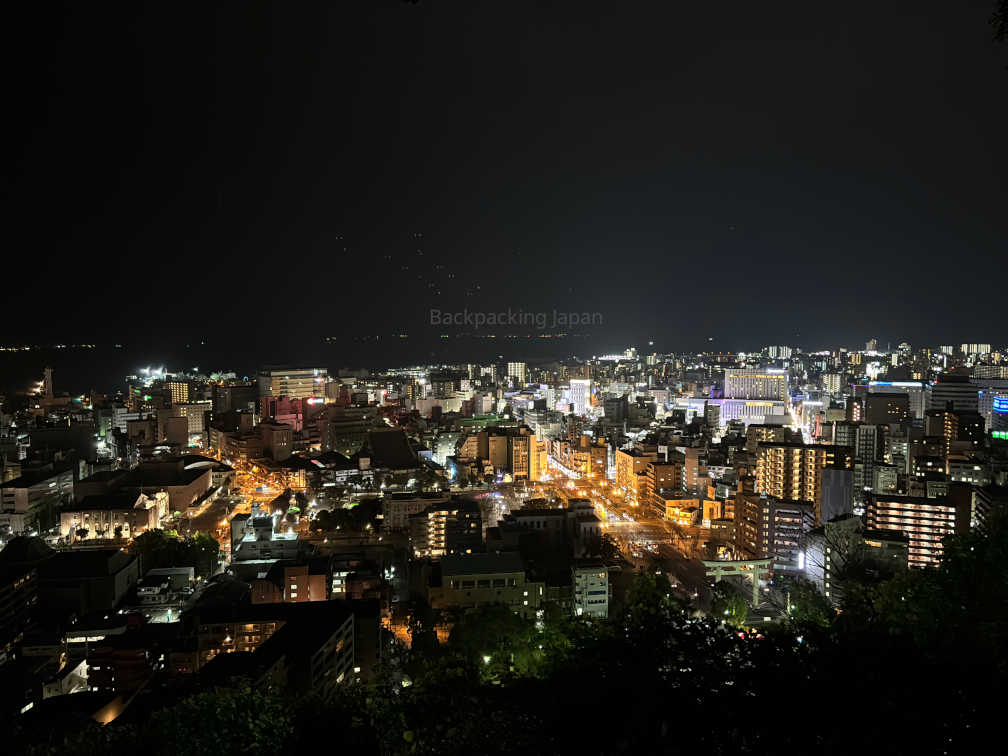
The giant torii gate from earlier is also visible!
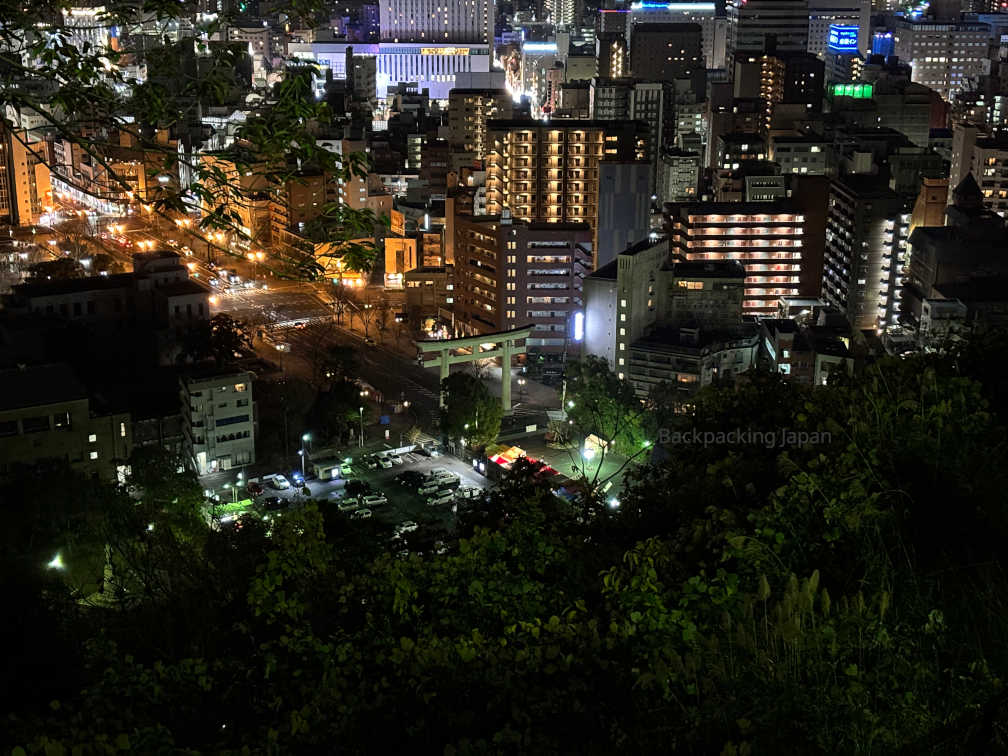
With that, I went back to the hotel to wind down and call it a night.
Leaving Kagoshima
The next morning arrived, and it was finally time to hop over to the next city. To keep my mornings brief—and to allow for more opportunities to try various restaurants and local foods in the next city—I keep my breakfast small, to an onigiri or two to start the day. This will be a recurring practice for a significant portion of the trip.
As mentioned earlier, it’s possible to time the 24-hour pass to expire after you arrive at JR Kagoshima-Chuo station. Doing so, you’ll have one less fare to pay for. Thus I made sure to ride while the 24-hour ticket was still valid.
Having arrived at the station, it was finally possible to purchase my first-ever physical IC card, the Sugoca.

With that, it was time to ride the Shinkansen for my first time ever and hop over to the next city, Kumamoto.

Thanks for reading and as always, I hope you’re enjoying following along my 35-day journey across Japan. While I didn’t get to fit as many lessons in the text above, there’s still some thoughts I’d like to share which may turn out to be useful.
Summary and Lessons Learned
Summary
Airport
Kagoshima Airport is located nearly 1 hour away from the city center of Kagoshima. There is no train line which connects the two, but there is the airport limousine bus.
Airport Limousine Bus
IC Card is not accepted; a ticket must be purchased separately and can be paid with in cash. Make sure you know which stop you’re getting off at in advance; the staff sort the luggage based on the stops and will take out the luggage accordingly.
City Trams
The fares for the trams in Kagoshima cannot be paid for with IC cards. For those spending only a day in Kagoshima, the 24-hour city-tram, city-bus, and city-view bus pass can be purchased. This pass is perfect for getting around the city and finally connecting to JR Kagoshima-Chuo before it expires. Note that this pass is not applicable when riding the Sakurajima Island-View Bus.
Hotel
Tenmonkan is basically the downtown area of Kagoshima, encompassing a large amount of commercial businesses, making it a great area to stay in. The drawback is that it takes 15 minutes by tram to get to the JR Kagoshima-Chuo Station (which is where the Shinkansen can be boarded). However, the convenience of staying in Tenmonkan was well worth this trade off.
Attractions
Sakurajima island
A volcanic island which is accessible from Kagoshima by ferry. The volcano is still active which makes it a wonderful location for visiting the onsens.
Nagisa Park Footbath (Sakurajima)
A foot bath which uses hot spring water. Be sure to bring your own towel to dry off afterwards.
Nagisa Lava Trail (Sakurajima)
A beautiful promenade along the shores of Sakurajima Island facing Kagoshima. The landscape switches between the shoreline and a forest trail for a scenic walk.
Sakurajima Cats
Around the foot bath and along the trail, there are many stray cats which are friendly towards people to the extent that they may even approach you!
Yunohira Observation Deck
The highest point on Mt. Sakurajima which is accessible to the public.
Terukuni Shrine
A popular shrine in Kagoshima which has a large Torii gate by the entrance. The shrine is accessible even at night.
Mount Shiroyama
A mountain which overlooks Kagoshima City. During the daytime, Sakurajima will also be visible. The hike is fairly short, taking 20-30 minutes from the entrance near Terukuni Shrine. There are no lamps to light up the path at night, so be sure to be fully equipped before trekking past dawn.
Food
Kurobuta Pork
Kagoshima is known for its local breed of black pigs which is featured in its cuisine as kurobuta. Shabu-shabu is a very popular way of eating kurobuta, so much so that it’s probably best to get a reservation; when I was in Kagoshima, I was unable to find a restaurant without having a reservation. Another popular way of eating kurobuta is as pork katsu
Ferry Udon
The udon stall in the ferry seemed to be quite popular with the riders, especially because you can temporarily bring the bowl elsewhere to enjoy the scenery while eating. The udon itself is pretty standard, but the experience itself is quite fun as there’s also the 15-minute travel time to race against.
Kagoshima Ramen
Kagoshima has its own take on ramen which has a rather distinct flavor profile compared to the typical tonkatsu ramen that many are familiar with.
Kasutadon
A local confectionery which is a sort of sponge cake filled with custard. It can be bought at the confectionary store Satsuma Jokiya in Tenmonkan.
Donuts
Satsuma Jokiya also sells donuts!
Amazake
A sweet drink made from fermented rice. There was a stall at the entrance of Terikuni Shrine at the end of the new year’s period.
Lesson Learned
Rent a Car for Sakurajima
Sakurajima is quite large, making it impractical to walk around the entire island especially during a day trip. A bike is more manageable, requiring several hours to lap the entire island, and is the minimum I would consider before setting off on such a journey. If your goal is to see the entire island in the shortest time possible, renting a car is a great option if money isn’t a large factor.
Stay at least 2 Days
Kagoshima is a fairly large area to explore. In order to have a trip that is leisurely and unrushed, I’d set aside 2 full days minimum to spend in the prefecture like so: 1 full day in Sakurajima which could also include an overnight stay at an onsen, and 1 full day in Kagoshima to explore the entire city. With a little more leeway, I’d stay for a total of 3 days and use the extra day to explore other areas of the prefecture such as Ibusuki which is known for having steam sand baths where you can lay under geothermally warmed sand.
Make Reservations – Kurobuta Shabu-Shabu
Maybe it was because it was still technically the new year’s holidays, or maybe it was because kurobuta shabu-shabu is simply that popular of a food that there was no restaurant with any seating availability. If you’ve also decided that this local dish is a must-try, be sure to make a reservation to guarantee a spot.

